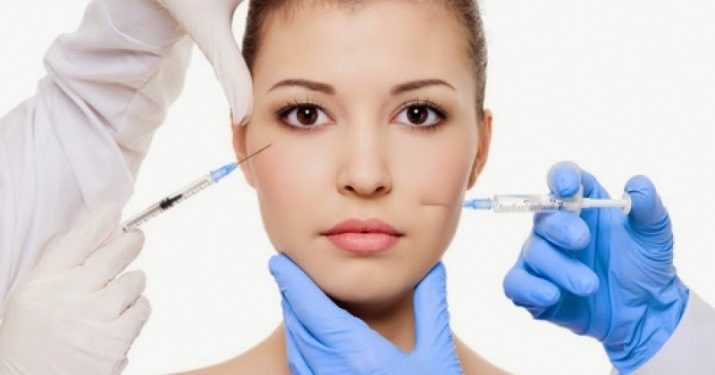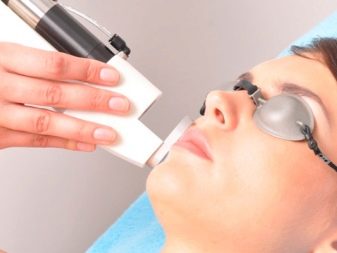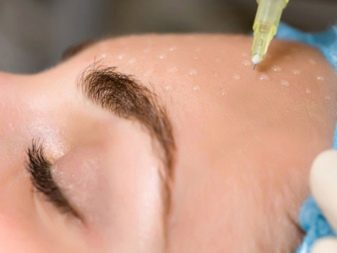Inexorable time leads to aging, which cosmetologists can partially stop. They offer biorevitalization and bioreparation procedures that activate the work of epidermal cells by injection with hyaluronic acid preparations. The difference between these two methods can be understood by looking at each of them in more detail.

What are skin rejuvenation procedures?
Human skin contains connective tissue (elastin and collagen) filled with hyaluronic acid. These compounds are responsible for the elasticity and elasticity of the cover. Over time, the constituent tissues are broken and reduced, which leads to "wilting" of the skin.
Bioreparation and biorevitalization are innovative methods aimed at restoring the skin. Both work on the principle of delivery of hyaluronic acid into the patient’s tissue, but at the same time they have differences in the method of exposure and the final result. In the first case, the drug is administered with the addition of vitamins, proteins and amino acids, in the second - pure hyaluronic acid is used.
For those who first turn to injections of this kind, as well as young patients, biorevitalization is suitable. Those who decide to resort to the procedure after the age of 40, as well as those who want to get a more lasting result, should choose bioreparation.


Bioreparation
Bioreparation is a rejuvenation procedure by introducing hyaluronic acid, proteins, amino acids and vitamins through microinjections under the skin. The injected drugs can be in the skin for up to 20 days, nourishing the cells and promoting the formation of collagen fibers.Moreover, the drug triggers the natural processes of tissue regeneration. It moisturizes and tightens the skin, strengthens the vascular system, dissolves scar tissue, has an active antioxidant effect.
The course of procedures performed by the method of bioreparation consists of three sessions, each of which is performed at intervals of three weeks. After six months, the course can be repeated. The cosmetologist makes a more precise appointment individually, depending on the condition of the skin. Traces of injections become invisible after a day, so treatment is best done on weekends.


Biorevitalization
This procedure resembles simplified bioreparation. In this case, subcutaneous administration of hyaluronic acid is carried out without any additives. The product heals tissues in a mild and natural way. A similar method can be used by young people for the purpose of prevention, as well as patients after forty years to moisturize the skin. Biorevitalization does not imply intensive rejuvenation, smoothing deep wrinkles, but in any case, the drug activates the fibroplasts responsible for the production of collagen. As a result, the skin becomes firm and fresh.
This method is suitable not only for the face, it can be used for any part of the body. The beneficial effects of the drug can be noticed immediately, but several procedures should be completed to consolidate the effect.
Biorevitalization is carried out in two ways: injection and laser.
- The injection method involves the introduction of the drug with a very thin needle into special areas of the skin. It can be carried out from the age of twenty-five to prevent premature aging. Several procedures are enough for young people once a half a year. For patients after forty years old who want to maintain their facial skin in a natural fresh state, the cosmetologist advises the frequency and number of injections individually.
- The laser exposure method is carried out without the use of needles. Delivery of the drug into the deep subcutaneous layers occurs due to the infrared laser. The treatment is painless. Spend about 7-10 procedures, one per week. A stable result lasts from six months to a year.


Indications and contraindications
Indications for use, as well as contraindications for both procedures are the same.
Indications:
- sensitive dehydrated skin;
- decreased muscle tone;
- scars, postoperative scars;
- the formation of hyperpigmentation, rosacea;
- deep wrinkles;
- stretch marks after weight loss;
- sagging skin;
- acne.



Before the procedure, you should familiarize yourself with contraindications, among which:
- infectious skin diseases;
- diabetes;
- oncology;
- coagulation factor disorders;
- viral diseases accompanied by high fever;
- herpes;
- epilepsy;
- autoimmune diseases;
- tumors;
- allergic reactions to injected drugs.

Injection procedure
Before the treatment procedure, the skin is cleansed with a chlorhexidine solution. During the procedure, the thinnest needles are used, which allows to minimize the pain of the process. Nevertheless, before it begins, an anesthetic gel is applied. It helps to eliminate the pain from the introduction of the needle and the discomfort of getting the drug under the skin.
The next step is the introduction of a bioreparant (papular technique is used). After administration, a millimeter papule forms around the eyes, in other areas of the skin - no more than two millimeters. At the end of the procedure, the skin is treated with a soothing, healing cream. It protects the cover from the ingress of microorganisms.
Tissue repair is quite fast. In rare cases, the procedure is accompanied by edema. In the first days after injections, do not sunbathe and use cosmetics.
The result of the effects of the preparations is elastic skin and a natural complexion, smoothing of scars and deep wrinkles.Other problems indicated in the indications for use of the procedure are also eliminated. It should be borne in mind that hyaluronic acid reacts by decay to a high temperature, therefore, in order to obtain a more lasting effect, treatment is best carried out in spring or autumn.


Medications for treatments
As already mentioned, the biorevitalization procedure is carried out by the method of introducing hyaluronic acid. The bioreparation technique is carried out in the same way.
It has additional functions, therefore, uses a wider drug spectrum.
- The Russian drug hyalripayer-02 tightens the skin well, hyalripayer-04 helps restore tissue after aggressive exposure to unsuccessful cosmetic procedures, hyalripayer-08 resorbes fatty tissue with L-carnitine in problem areas of the face.
- Switzerland offers Teosyal redensiti with a good lifting effect, Teosyal MesoExpert for active toning and long-term hydration of the skin.


- Meso − Xanthin F199 South Korea and the USA stimulate skin DNA; Meso-Wharton P199 minimizes wrinkles and relieves tissue swelling.
- South Korea also produces Revofil AQUASHINE, which prevents collagen degradation; Revofil AQUASHINE BR depigments and reduces melanin synthesis.


How are the methods different?
To summarize, we can trace the difference between biorevitalization and bioreparation.
- Biorevitalization moisturizes, rehydrates the skin, and bioreparation triggers self-healing processes.
- The first method uses pure hyaluronic acid, the second with active additives.
- Biorevitalization can be carried out from 25 years, with a preventive and therapeutic purpose. Bioreparation is recommended after 40 or after 35 years with individual problems.
- Bioreparation has a more persistent effect obtained in fewer treatment sessions.

In this video, the cosmetologist talks about what is good biorevitalization.










